
Stackable Playscapes system transforms empty lots into playgrounds
Two Jordanian architects have devised a modular, easy-to-assemble system of street furniture to bring ad-hoc playgrounds to cities, refugee camps and other environments lacking in public space.
Sarah Abdul Majid and Sandra Hiari designed the Playscapes system for use in their own hometown of Amman, where public parks are scarce.
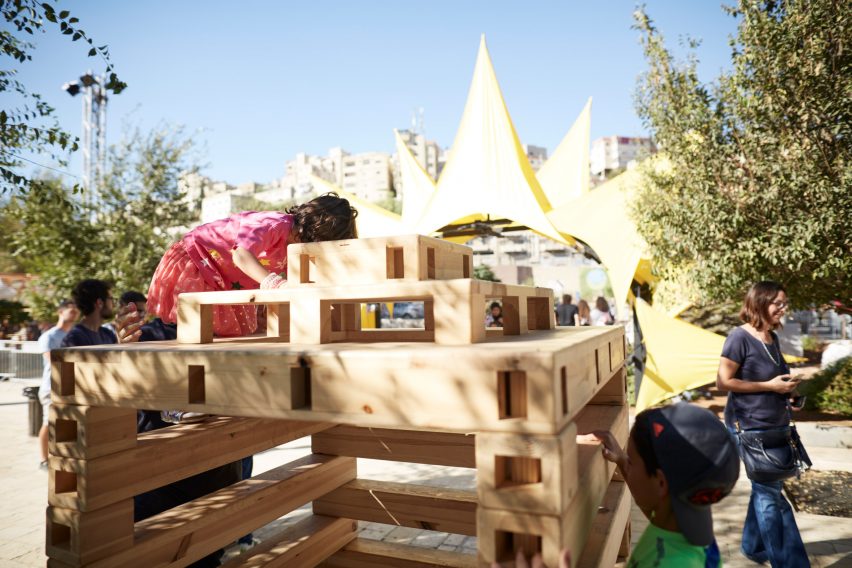
The system is made up of a series of simple, low-cost wooden boxes that can be joined together to form play equipment, cubby houses, sandboxes, seating, planters or other functional elements.
There is no need for specialist tools when it comes to assembly, making construction a relatively simple, two-person job.
Each section is made from machine-cut pine wood modules, which have a similar shape to pallets, that are connected using wooden rods. Transport costs are kept down, as the system packs flat.
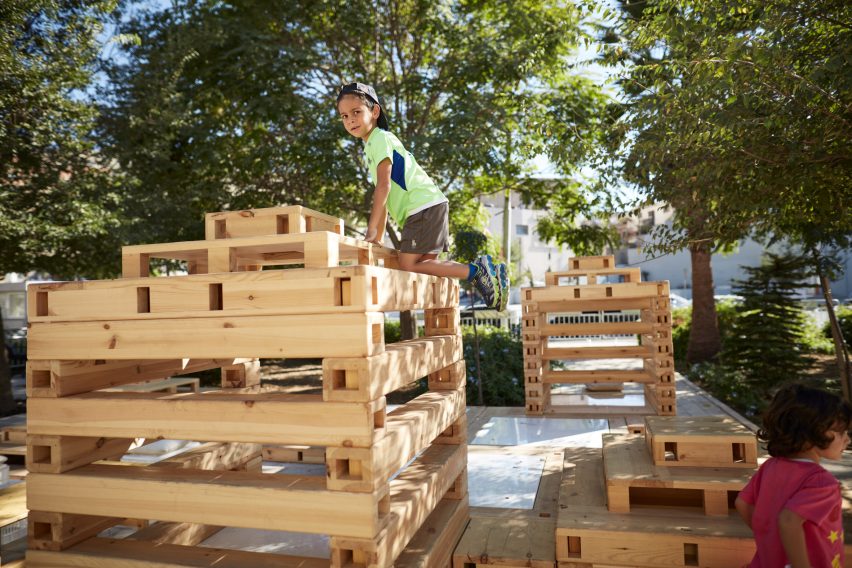
The architects imagined that community groups would use Playscapes to activate empty lots, turning them into gathering places and playgrounds. But while Majid and Hiari designed Playscapes with Ammani communities in mind, they have found there is broader interest in the project.
"This is an idea that can be implemented in refugee camps because it is something that is temporary and can be easily put together," Abdul Majid told Dezeen.
"We've also had interest from schools and nurseries because the system can be reconfigured to suit different age groups," Majid continued. "For older children, the system can accommodate rods for climbing. The possibilities are endless; it just depends on your imagination and space requirements."
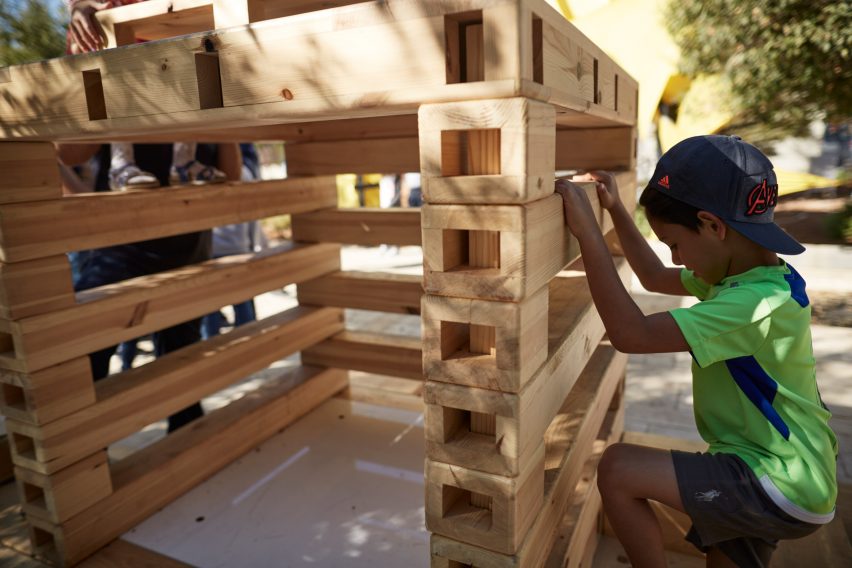
Majid, who studied landscape urbanism at London's Architectural Association, started collaborating with Hiari on Playscapes after both architects worked on the Amman 2025 master plan for the Greater Amman Municipality.
The process inspired her to look at ways she could implement urban design ideas at the grassroots rather than government level.
"Unfortunately when we go through formal channels, sometimes it's very challenging, and because of politics, a lot of the plans just stayed on the shelf," she said. "So I decided to go informally, and now I'm into small urban interventions."
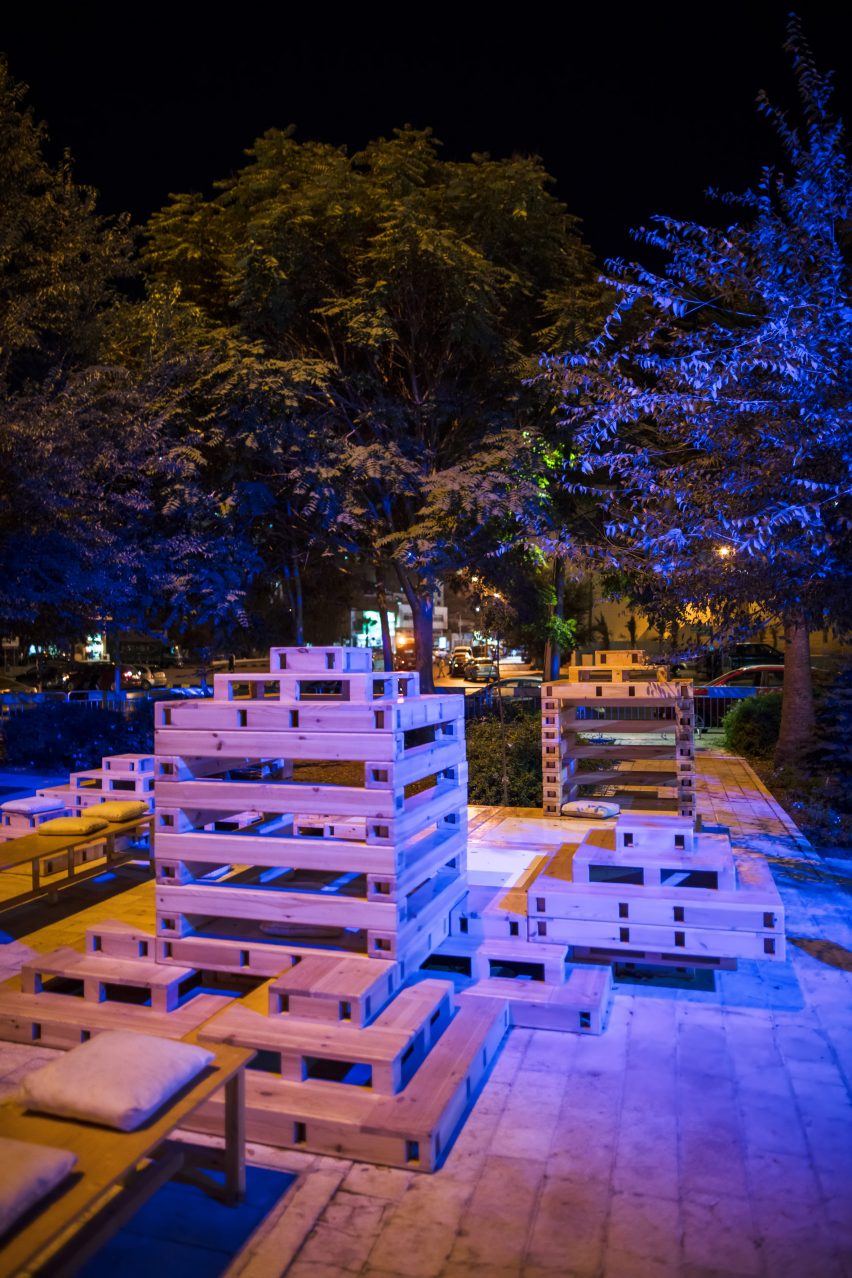
Playscapes addresses one of Amman's biggest needs — for more public space. The city, which grew from a population of approximately 2,000 to 4 million over the course of the 20th-century, is largely unplanned and has few parks.
"There aren't many green spaces or dedicated playgrounds in Amman, or any other city in Jordan, and we have lots of voids within the city," Majid said. "To be able to infill these even temporarily with play areas or urban furniture, that would bring these spaces to life and activate them."
Despite only working on the project since April 2017, Majid and Hiari have already received a number of customer orders.
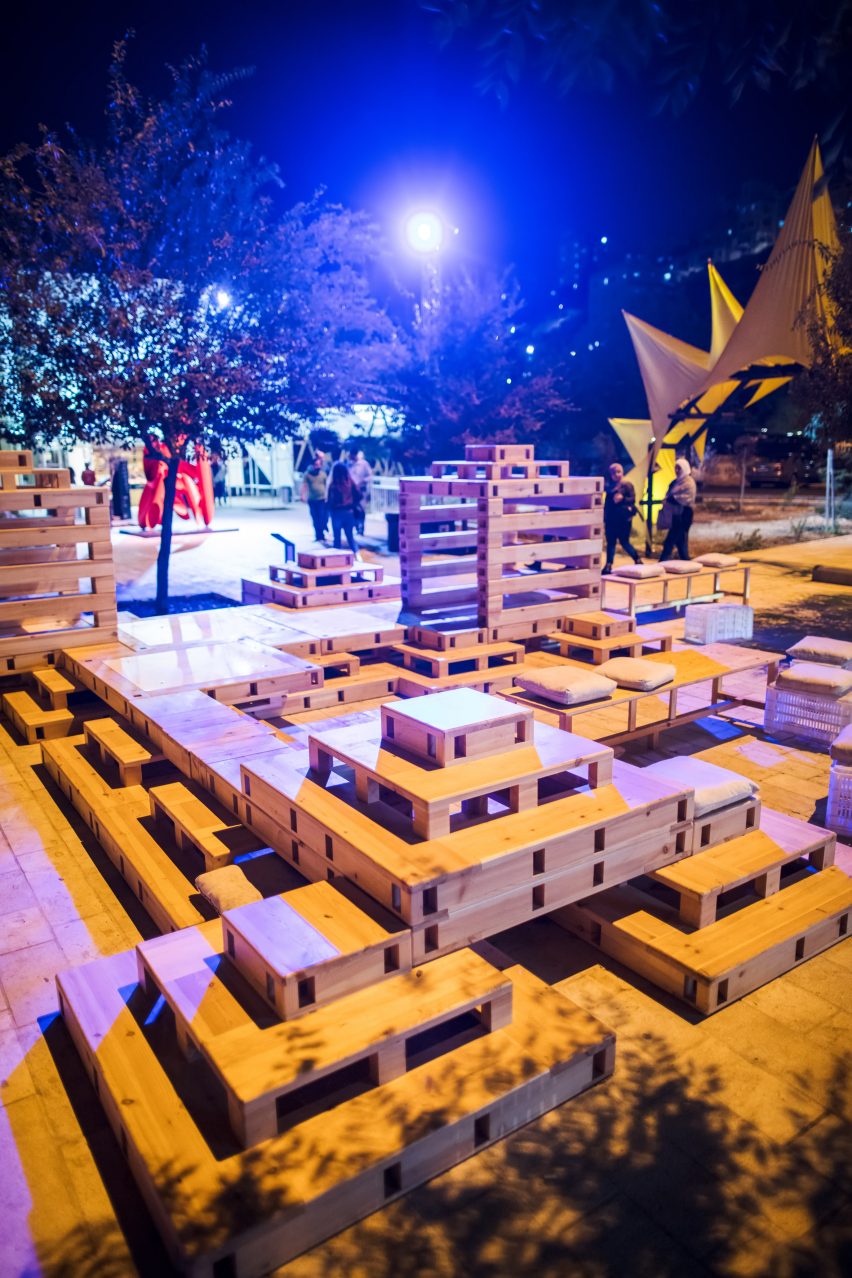
They are currently developing several preset packages for sale through their website, and working on a second, more compact version of the product that will be suitable for smaller spaces.
Abdul Majid and Hiari presented Playscapes at Amman Design Week in October 2017, where public space and landscape architecture were recurring themes.
Now in its second year, Amman Design Week (ADW) brings together designers from across the region and aims to get the public involved in appreciating design in all its facets. The hub of the event is The Hangar, where emerging Jordanian designers made a strong showing, and Palestinian architect Dima Srouji presented a series of unusual glass vessels.